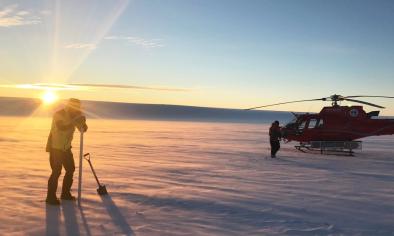Science Source
Antarctic ice-sheet loss driven by basal melting of ice shelves
- States that accurate prediction of global sea-level rise requires that we understand the cause of recent, widespread and intensifying glacier acceleration along Antarctic ice-sheet coastal margins
- States that atmospheric and oceanic forcing have the potential to reduce the thickness and extent of floating ice shelves, potentially limiting their ability to buttress the flow of grounded tributary glaciers
- States that the extent and magnitude of ice-shelf thickness change, the underlying causes of such change, and its link to glacier flow rate are poorly understood
- Uses satellite laser altimetry and modelling of the surface firn layer to reveal the circum-Antarctic pattern of ice-shelf thinning through increased basal melt
- Deduces that this increased melt is the primary control of Antarctic ice-sheet loss, through a reduction in buttressing of the adjacent ice sheet leading to accelerated glacier flow
- Finds that the highest thinning rates occur where warm water at depth can access thick ice shelves via submarine troughs crossing the continental shelf
- Finds that wind forcing could explain the dominant patterns of both basal melting and the surface melting and collapse of Antarctic ice shelves, through ocean upwelling in the Amundsen and Bellingshausen seas, and atmospheric warming on the Antarctic Peninsula
- This implies that climate forcing through changing winds influences Antarctic ice-sheet mass balance, and hence global sea level, on annual to decadal timescales
Related Content
Headline

Jan 29, 2020 | BBC News
Journey to the 'doomsday glacier'
Headline

Nov 22, 2019 | NOAA Climate.gov
Understanding climate: Antarctic sea ice extent
Headline

Mar 26, 2019 | The Guardian
Australian researchers find huge lakes beneath largest east Antarctic glacier
Science Source
| Geophysical Research Letters
Mass Loss of Totten and Moscow University Glaciers, East Antarctica, Using Regionally Optimized GRACE Mascons
Yara Mohajerani, Isabella Velicogna, Eric Rignot


